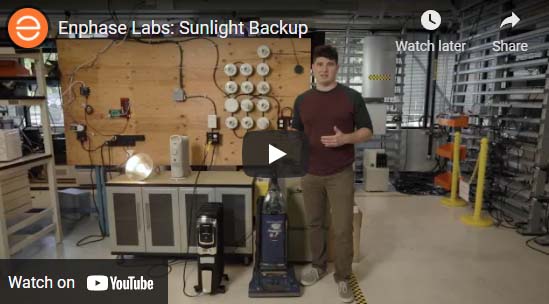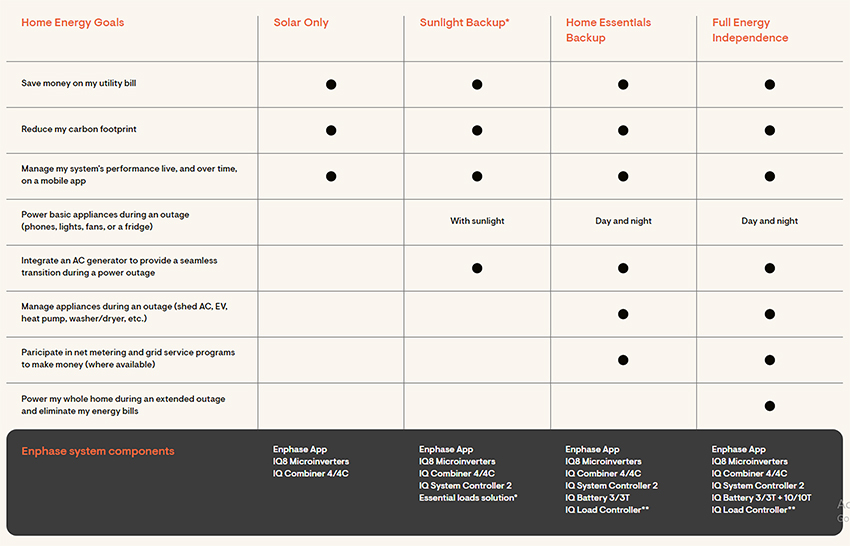Welcome to the
Run on Sun Monthly Newsletter

In this Issue: |
October, 2021
Volume: 12 Issue: 10
Battle to Save Rooftop Solar - Act Now!Readers of this blog are well aware of the fight being waged before the California Public Utilities Commission (CPUC) as we first wrote about this back in February! Now we are entering the final stretch in this fight, and quite frankly, we are losing. Why, you ask? How can we be losing the battle to preserve your right to put solar on your home or business, when everybody loves that idea? The answer is easy: the opposing forces - we are talking about you here, Southern California Edison - have nearly infinitely more money than we do, and they are spending it like crazy. So how do we possibly fight back? With you. And tens of thousands of other folks just like you. The California Solar and Storage Association (CALSSA) - our trade association - is fighting hard to preserve the value of the investment made by past solar clients, and those in the future. They have created an audacious goal: generate 200,000 public comments by November 20! Here's how CALSSA framed the fight:
We cannot afford anyone sitting on the sidelines. If you own a solar power system, the value of your investment is at stake. If you realize that rooftop solar is a key piece in how we reduce carbon emissions to combat climate change, that goal is under attack! It's easy to join the fight: Mash that button below and tell the CPUC to side with solar consumers and not with the utilities!
|
“[T]wo hundred thousand is a number that the CPUC and the governor simply can’t ignore…”
Help Us Spread the News!


Enphase IQ8 Released - Sunlight Backup is a Thing!They say all good things come to they who wait - and boy have I been waiting for this day for a long, long time! But Enphase has finally released their much anticipated IQ8 microinverter - the first device that can provide "Sunlight Backup" without batteries! Here's my take... Long Time Comin!Those of you who follow this blog know that I have been writing about the IQ8 microinverter for almost forever, starting with this piece from August 2018, titled "What I saw at Enphase - Mind Blown!" Back then I was fortunate enough to get to visit the Enphase lab in Petaluma and got to see a demonstration of what Enphase is now calling "Sunlight Backup" - the ability for your PV system to continue to operate when the grid goes down. While I wasn't allowed to record the demo, Enphase, to mark the public release of the IQ8, has posted the following video which illustrates the concept quite nicely: And a word about code compliance. The anti-islanding rules that require a grid-tied PV system to not export power to the grid when the grid fails, are still very much in force. After all, we want our systems to be safe for all involved. So to meet code, you need to also install an automatic transfer switch, which Enphase is now calling the IQ System Controller - FKA Enpower - into your system. But the IQ System Controller costs a fraction of what the actual storage components do, so this is a way to have some power during the day at minimal additional cost! As this video nicely demonstrates, if you have too many loads turned on when the grid fails, the microgrid cannot start. But as soon as you shed sufficient loads, the microgrid will form instantly, all on its own. Enphase has put together a pretty good chart (albeit kinda small here, but click on it to see it full size) that shows the components needed to achieve different capabilities: Solar Only is what we have been doing for years. Home Essentials Backup, aka partial-home backup, and Full Energy Independence, aka full-home backup are what you get when you add storage. But Sunlight Backup is what IQ8 brings to the party! Please don't keep-a me waitin...So when can we put these on your roof? Well not today, that's for certain. We are being told that we will see shipments toward the end of December. (Of course, if they are coming into the ports of either LA or Long Beach, we could be waiting for months!) First quarter of next year is likely a safer bet. Still waiting to see firm pricing as well, but figure something like 25% higher than the comparable IQ7+ that we have been installing for the past two years - and without a single unit failure! The wait is almost over - watch this space!
|
NEM 3.0 Transition Rules - Potential Solar Clients Need to Read This!New solar clients in Southern California Edison territory (along with their counterparts in PG&E or SDG&E territories) will soon find themselves operating under the not yet known, but certainly less advantageous NEM 3.0 rules that has the potential to significantly affect their return on investment. While NEM 3.0 won't go into effect for some time, we already have an idea of what clients need to do to secure the benefits of the present NEM rules. Here's what we know so far... NEM 2.0 - the Present State of PlaySCE customer presently operate under NEM 2.0 rules established a number of years ago. (Municipal utility customers, such as those in PWP or LADWP, are unaffected by any of this, fortunately.) We wrote extensively about the impact of the NEM 2.0 transition at the time, as this article from 2017 explained: NEM 2.0 is Here - Now What? Essentially the NEM 2.0 rules made several changes: they introduced a one-time application fee of $75, they forced solar customers onto a Time-of-Use rate structure (instead of the more solar-friendly tiered rates), and they introduced the concept of non-bypassable charges - components of the rate structure that have to be paid on every kWh imported from the grid, even if it would otherwise be "netted out" thanks to energy exported. Those changes, while concerning as they marked the first successful effort to chip away at the benefits of net metering, turned out to be relatively mild and the industry surged forward despite them. NEM 3.0 - Dark Days Ahead?Now we are in the middle of the process of bringing about NEM 3.0, and it looks far scarier than what we faced in 2017. For example, one proposal calls for monthly fees on the order of $75 for every residential solar customer (commercial customers would pay far more). The value of exported energy might drop by as much as 80%! Payback periods could balloon to as much as 20 years! However that process turns out, if it is possible to get in under the current rules you will save a lot of money! Here's what we know about how the transition period will be handled:
The uncertainty around all of this is distressing but is out of our hands. What we can do is to urge folks on the fence about going solar to act before mid-January. Bear in mind that the project does not need to be completed by mid-January, you simply have to have your completed application submitted by then. We anticipate quite the rush to get applications in by then, and there is always the concern that a reviewer at SCE might kick back an application and deem it incomplete. The best way to be safe is to get the application in as soon as possible, thereby avoiding the crunch. So right now really is the best time for anyone in SCE's service area to go solar! Give us a call and let's get the process started!
|



